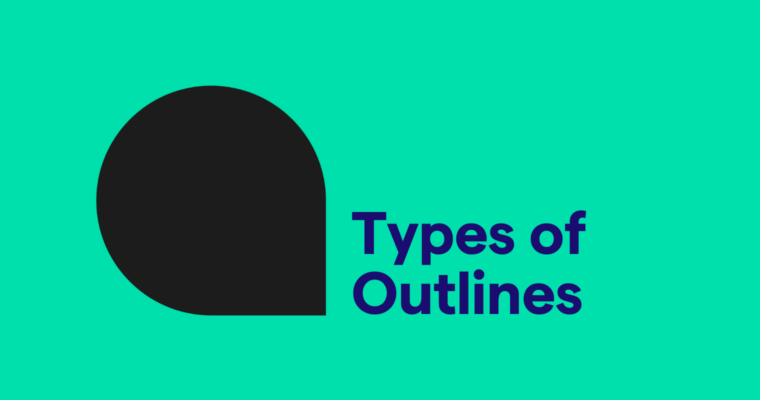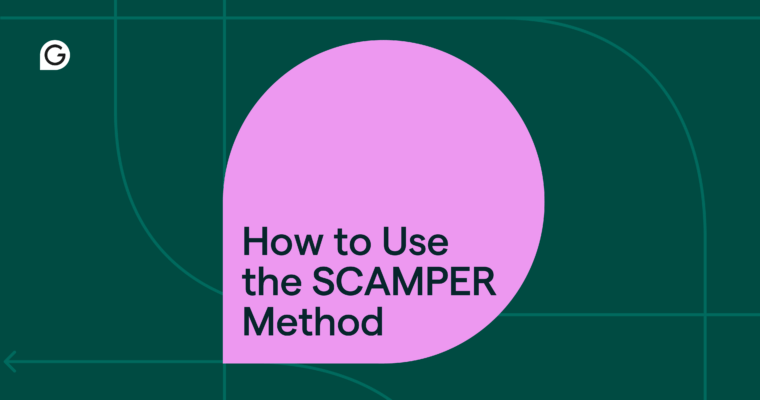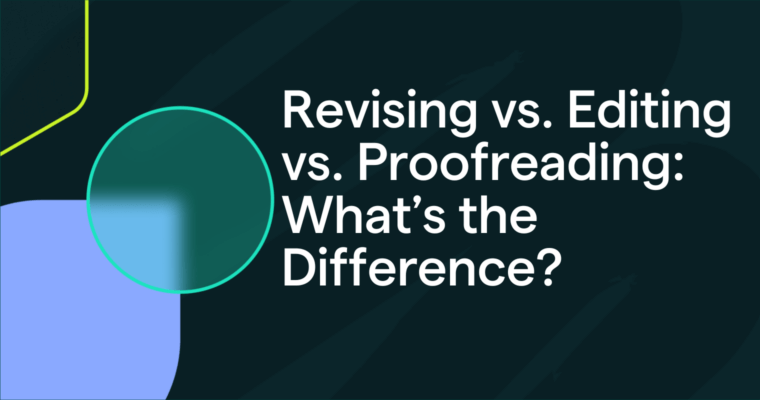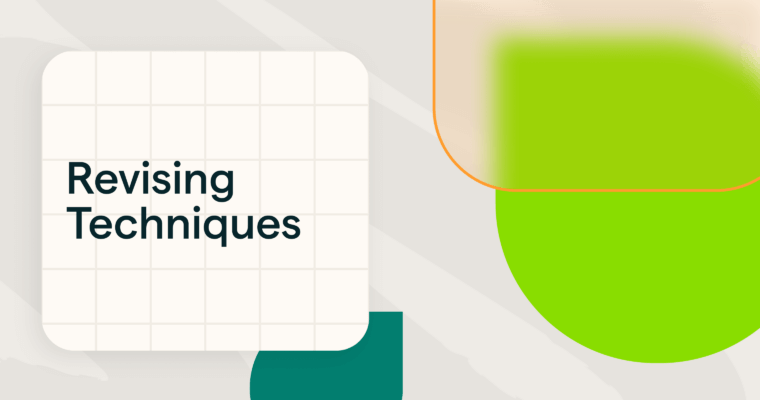
Ever feel like your thoughts are racing in a thousand different directions when you start writing? That’s where outlining comes in—it’s like a roadmap that guides your ideas and keeps them from going off track.
From structured academic outlines to free-spirited mind maps, let’s explore seven outlining methods (plus examples!) that can help bring order to the creative chaos.
Table of contents
Choosing the right outline for your writing
Formal vs. informal outlines
Outlines come in many forms, some structured like blueprints, others more like quick sketches. A formal outline is highly organized, arranging ideas in a clear hierarchy. An informal outline, on the other hand, is more adaptable, designed to capture thoughts in a way that feels intuitive to you.
Formal outline
Formal outlines typically follow alphanumeric (I, A, 1, a) or decimal (1.0, 1.1) structures. They’re especially useful when your ideas are complex or layered, like in research papers or business proposals.
Why use one?
- Provides a clear, step-by-step roadmap for complex writing projects
- Helps you stay focused and on topic
- Reveals gaps in logic before you start drafting
- Improves confidence by breaking big goals into manageable steps
Informal outline
Informal outlines are free-form and flexible—think bullet lists, mind maps, or jotted notes. They’re perfect for creative projects or early-stage brainstorming.
Why go informal?
- Encourages ideas to flow freely without getting bogged down by structure
- Reduces pressure and helps you overcome writer’s block
- Supports creative thinking, especially in early drafts or creative work
No matter which outline style you choose, breaking down a big idea into smaller parts can feel daunting. If you’re feeling stuck, try Grammarly’s free AI outline generator. It’s a fast, inspiring way to shape your ideas into a clear path forward—so you can focus less on the structure and more on what you want to say.
Types of outlines in writing
Now that we’ve covered the basics of formal vs. informal outlines, let’s take it a step further: There are actually six distinct types that fall within these two categories.
Each serves a unique purpose, depending on the writing project at hand. Below, we’ll explore the six types of outlines in more detail to help you choose the best one for your next idea.
| Outline type | Format | Best for | Formal vs. informal |
| Alphanumeric outline | Roman numerals, letters, numbers | Academic writing, research papers | Formal |
| Decimal outline | Numerical system with decimals | Technical writing, structured documents | Formal |
| Sentence outline | Complete sentences | Speeches, detailed research planning | Formal |
| Topic outline | Short phrases, keywords | Brainstorming, quick organization | Informal |
| Working outline | Flexible, evolving structure | Long-form writing, evolving projects | Informal |
| Reverse outline | Created after drafting | Revising drafts, improving structure | Informal |
1 Alphanumeric outline
An alphanumeric outline is like the ultimate filing system for your thoughts—a mix of Roman numerals, capital letters, numbers, and lowercase letters (I, A, 1, a) that keeps everything in perfect order. Think of it as a nesting doll for ideas, where big concepts break down into smaller, supporting details. It’s structured, easy to follow, and a go-to choice for essays, research papers, and anything that needs a logical, step-by-step flow.
What it’s used for:
- Common in academic writing, research papers, and essays
- Helps writers logically structure their ideas before drafting
- Useful for breaking down complex topics into manageable sections
Alphanumeric outline example:
I. Introduction
A. Background information
B. Thesis statement
II. Main idea 1
A. Supporting detail 1
1. Sub-detail
2. Sub-detail
B. Supporting detail 2
1. Sub-detail
2. Sub-detail
III. Conclusion
A. Restate thesis
B. Summary of main points
2 Decimal outline
A decimal outline is like the GPS of organization, mapping out ideas with a clear, number-based system (think 1.0, 1.1, 1.1.1). It’s precise, structured, and ultra-organized, giving your writing a logical flow that’s easy to expand or refine. Decimal outlines keep things sleek and systematic, making it a go-to for detailed projects and technical writing.
What it’s used for:
- Ideal for scientific or technical writing
- Helps maintain strict order and hierarchy
- Often used in reports and formal documents
Decimal outline example:
Main topic
1.1 Subtopic 1
1.1.1 Detail 1
1.1.2 Detail 2
1.2 Subtopic 2
1.2.1 Detail 1
1.2.2 Detail 2
Main topic 2
2.1 Subtopic 1
2.1.1 Detail 1
2.1.2 Detail 2
3 Sentence outline
A sentence outline is like a rough draft in disguise—every point is written as a complete, polished sentence, giving you a crystal-clear preview of your paper. Unlike quick bullet points or shorthand notes, this outline spells everything out from the start, making the actual writing process a breeze. Sure, it takes a little extra effort up front, but in the end, it’s like having a blueprint that practically writes the paper for you.
What it’s used for:
- Helpful for formal essays, speeches, and research papers
- Ensures detailed planning before drafting
- Helps writers clarify arguments and avoid vagueness
Sentence outline example:
I. The rise of electric vehicles (EVs) is changing the automotive industry.
A. Governments worldwide are incentivizing EV adoption.
B. Car manufacturers are investing widely in EV technology.
II. Despite progress, EV adoption faces several main challenges.
A. Charging infrastructure remains underdeveloped in many areas.
B. Battery costs and range anxiety impact buyer decisions negatively.
4 Topic outline
A topic outline is like the bare-bones blueprint of your writing—quick, snappy, and straight to the point. Instead of using full sentences, it uses short phrases or single words to sketch out the big ideas and their supporting points. Think of it as your writing skeleton, holding everything together without the extra fluff. It’s fast, flexible, and perfect for brainstorming, letting you see the structure at a glance and fill in the details later.
What it’s used for:
- Great for quick planning and brainstorming
- Useful in flexible or informal writing projects
- Provides a sparsely detailed overview of the project’s structure
Topic outline example:
I. Benefits of exercise
A. Physical health
1. Weight management
2. Heart health
B. Mental health
1. Stress reduction
2. Improved focus
II. Types of exercise
A. Cardio
B. Strength training
III.Creating a routine
A. Setting goals
B. Staying motivated
5 Working outline
A working outline is like a draft with a passport—always ready to travel, shift directions, and explore new ideas. Unlike formal outlines, this one flows with your creativity, letting you shuffle, tweak, and expand ideas as you write. Whether you prefer bullet points, sticky notes, a digital doc, or even doodles in the margins, a working outline keeps your brainstorming flexible and your writing on track—without locking you into a set structure too soon.
What it’s used for:
- Best for projects that require adjustments, such as academic research or long-form writing
- Makes it easy to add, remove, or shift ideas freely
- Allows for organic idea development
Working outline example:
A question-based working outline:
- Topic: The Future of AI in Education
- What is AI currently used for in schools?
- How can AI improve student learning experiences?
- What are the risks and ethical concerns of AI in education?
- How might AI impact teachers and traditional classroom settings?
6 Reverse outline
The reverse outline flips the script—literally! Unlike every other outline we’ve explored, this one comes after the draft is done. It’s like giving your work a stress test, summarizing each paragraph to check for flow, clarity, and logical structure. Think of it as your writing’s personal trainer, helping you spot weak points, trim unnecessary fluff, and strengthen your argument.
What it’s used for:
- Helps revise drafts and improve clarity
- Identifies weak areas, redundancies, or missing links
- Ensures logical flow of ideas
Reverse outline example:
- Paragraph 1: Introduces the topic but lacks a clear thesis → Revise to include a thesis statement.
- Paragraph 2: Discusses point A but needs a transition to point B → Add a linking sentence.
- Paragraph 3: Strong evidence but lacks a conclusion → Summarize the key takeaway.
Choosing the right outline for your writing
Each outline style serves a different purpose, so the best choice depends on your project’s needs. Here’s a quick guide to help you decide:
- Alphanumeric outline: Best for essays and research papers that need a clear, hierarchical structure
- Decimal outline: A go-to for reports and technical writing that demand precise organization
- Sentence outline: Great for crafting speeches or detailed plans where clarity is key
- Topic outline: Useful for jotting down quick ideas and keeping things flexible
- Working outline: Designed for projects that evolve over time, offering room for changes
Choosing the best type of outline can be tricky—what works for one project might not fit another. That’s where Grammarly comes in. With AI-powered suggestions, Grammarly helps you explore and refine different outlining methods, ensuring your ideas are structured with clarity. Whether you’re brainstorming, fine-tuning an argument, or reorganizing your draft, Grammarly makes the process effortless so you can focus on writing, not wrestling with structure.
Conclusion
Outlining isn’t one-size-fits-all, and that’s the beauty of it. Whether you love a highly structured plan or a flexible brainstorming approach, there’s an outline for every project. And if you want to fine-tune your organization even more, Grammarly is here to help—making it easier than ever to outline, draft, and perfect your writing with confidence.
Types of outlines FAQs
What are the four main components of an outline?
The four main components of an outline are:
- Introduction: Opening section that provides context
- Thesis statement: Central argument or main idea
- Body: Primary content with main points and supporting details
- Conclusion: Final section summarizing key points and implications
What is the most common type of outline?
The alphanumeric outline is the most widely used format in academic and professional writing. It follows a structured hierarchy using Roman numerals, capital letters, Arabic numerals, and lowercase letters (I, A, 1, a) to organize ideas logically. This format helps to maintain clarity and consistency, making it a go-to choice for academic writing, research papers, and essays.
What’s the difference between formal vs. informal outlines?
Outlines typically fall into two main categories: formal and informal. Formal outlines follow a structured format, using systems like alphanumeric, decimal, or full-sentence outlines to organize ideas in a clear, hierarchical way. These outlines are often required for academic papers, research projects, or detailed reports. Informal outlines are more flexible and free-form, including methods like topic outlines, mind maps, working outlines, and reverse outlines. These are great for brainstorming, drafting, or organizing thoughts without strict formatting rules.
Which type of outline contains the most detail?
The full-sentence outline includes the most detail. Each point and subpoint is written as a complete sentence, ensuring clarity, logical flow, and depth. This format is ideal for complex papers, research projects, and detailed essays, as it helps you organize ideas thoroughly before drafting.






